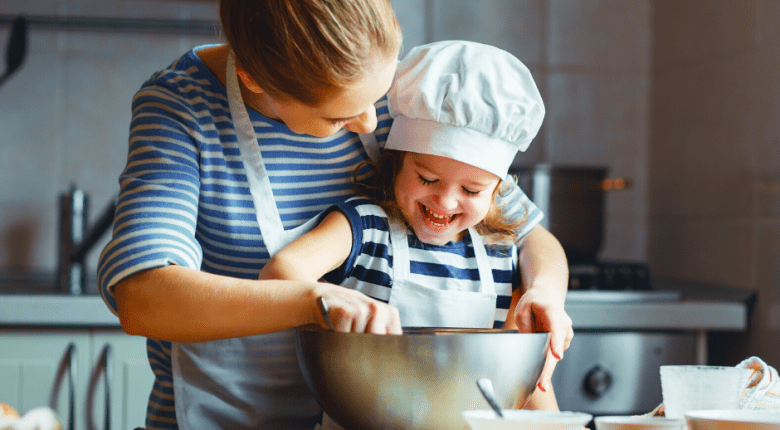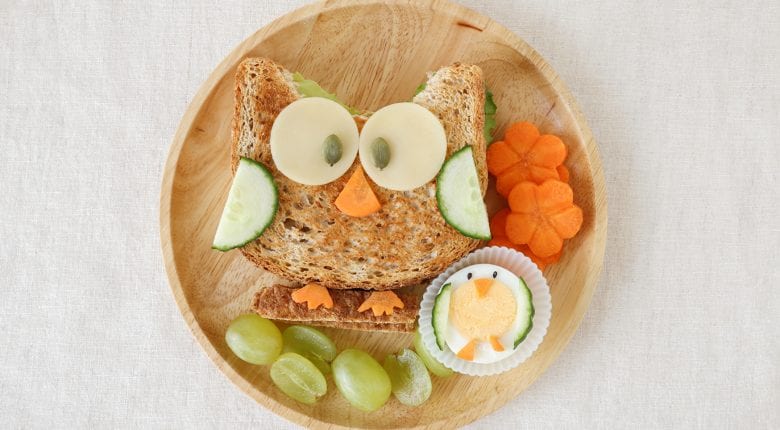Cooking and eating can mean joy but also sometimes frustration, especially when the very little ones are involved. We will provide you with inspiration that will help your children to enjoy eating and enjoying food in the foreground.
One person always leaves the peas, the other only eats pasta “without anything”. Admittedly, meals with children are not always easy . But why is that and how can you convey the fun and joy of eating to your children? We have put together some information and inspiration.

Pudding or broccoli? Clear choice!
What do you think your child would choose: pudding or broccoli? The pudding is definitely preferred – you either know this from experience or think it intuitively. The explanation: The preferred choice of sweet foods is innate , and that is a good thing. Sweet is a reference to sugar: a sign of maturity, a source of energy. Sour, on the other hand, indicates spoilage, while a bitter taste is an indication of toxins. The sour and bitter flavours are therefore rejected intuitively.
The colour green signals to the brain: Attention, immature, not edible! For this reason, young children clearly prefer the sweet pudding over the green broccoli. It is a pure survival instinct that is reflected here. However, in today’s affluent society, with safe, safe food in abundance, it is important that our offspring learn to love healthy greens from an early age . Sweet, high-energy dishes are no longer a rarity these days, but can lead to obesity and are now “more dangerous” in the long term.
Raw food a little different – and the little ones are fans too
So how can you make less popular but health-promoting foods more appealing? Carved fruits or vegetables are a great idea . Halved apples or kiwi fruit, to which grapes are attached as head and feet with toothpicks, quickly become cuddly fruit turtles. Even the youngest can help with the preparation. There are no limits to creativity here, the plate is your canvas. The happier the result looks, the more delicious it will certainly taste big and small – after all, the eye will eat too.
It is easy and yet effective, for example, to place raw vegetables on the plate in such a way that it looks like a nice face : a row of cucumber slices grins at us, carrot sticks are arranged in a wild hairstyle and two small bowls with herb quark and a cocktail tomato in the middle represent the eyes. Internet research on child-friendly prepared raw food will certainly stimulate your creativity even more.

Arouse the joy of discovery
However, the children first have to learn and experience that broccoli, kohlrabi and the like are harmless and can even be delicious. So what can be done about the congenital so-called neophobia (rejection of the new / unknown)?
- Positive example : Show your children how much you like healthy greens yourself.
- Allowing time : Getting used to new foods takes time. Researchers assume that something new has to be tried ten times before it is accepted. The mere exposure effect (i.e. repeated perception) also applies to foods and dishes. The more familiar, the higher the acceptance.
- Get to know the senses : You need all your senses to enjoy – and that takes practice. We have put together some suggestions for this in the next section.
See, taste, smell, feel, hear – and get to know the world of food
Enjoyment of food is not given through taste alone, rather all the senses play a role. If your children are already actively helping you to prepare the food, then actively encourage them to touch the products consciously, to try all stages of preparation, and to use their nose and ears . Ask questions and give some suggestions at the beginning: How does the apple feel? Smooth? The Kiwi? Velvety and a little rough? How does the rice sound when you put it in a cup? Like rain on the roof
The to take sensory experiences into words and “me tastes good / bad” to go beyond the classic, helps the conscious use of food to promote. Sensory games also help: fill different foods into opaque vessels. The children should now try to “smell” what it is about. Important: It should be made clear that food is not a toy, but should be treated with appreciation. The food used can be used wonderfully for the next meals.
Little helpers: there from the start
Even the youngest can be part of the evening cooking. To start their cooking career, children can take on tasks like adding flour to the dough and stirring . They are already actively involved in playing a role in the preparation of the food and are more likely to accept the food afterwards.
That the carrots do not grow in the supermarket has to be experienced and learned first. How our food is made can also be conveyed at home – it does not necessarily need a large garden or balcony. The well-known planting of cress also works on the sunny windowsill. Even more impressive are, of course, potatoes, which seem to multiply almost magically on the balcony, or tomatoes that suddenly appear on a green plant in the raised bed. When children can see how our food is created from the start , they develop a completely different relationship to food than when a finished dish is in front of them every evening.

“Today I’m the head chef!”
Just hand over the wooden spoon – if your child enjoys cooking, then just let him or her take over the cooking for tonight. Maybe your offspring has an idea of what should end up on their plate by themselves? Give your child a free hand and support you if necessary. When handling sharp objects and hot stovetops, your instructions or help are required. Therefore, do not leave your child unattended in the kitchen. Our recipe idea, which is easy to modify and only requires three ingredients: Vegetable soup. The main ingredients are onions, potatoes and another vegetable of your choice. Your child can freely choose the vegetables they like – whether carrots, broccoli, pumpkin, cauliflower or leek, whether frozen or fresh: there are many options.